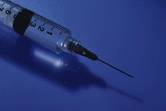
FRIDAY, Dec. 19, 2014 (HealthDay News) — Injectable drug users who also use cocaine and amphetamines have nearly double the suicide attempt rate of other substance users, a new study finds.
“We know that substance use is associated with the risk of suicide attempt and completed suicide,” Didier Jutras-Aswad, a psychiatry professor at the University of Montreal, said in a university news release. “However, there are many different profiles of drug users. We wanted to know who among substance users were actually more likely to attempt suicide.”
The researchers studied 1,200 adults who had injected drugs within the previous six months. In surveys, researchers asked them questions about drug use and suicide attempts.
At the start of the study, 6 percent of participants said they’d tried to commit suicide within the past six months, a much higher rate than in the general population.
Participants were then questioned twice a year for an average of four follow-up visits. During this follow-up, 143 participants reported at least one attempted suicide. Chronic and occasional use of stimulants such as cocaine and amphetamines was associated with nearly two times greater odds of reporting an attempt than the use of other drugs, the researchers found.
The researchers suspect that cocaine and amphetamine users are more vulnerable to suicidal urges because they’re more impulsive and moodier than people who use narcotic painkillers, for example. Also, they said, there are few cocaine addiction programs to help them stop using the drug.
“Our study addresses a number of important issues that could change practice,” Jutras-Aswad said. “While it confirms that drug use itself represents a significant risk for suicidal behavior, it identifies cocaine and amphetamine users as a higher-risk population. We therefore need to develop more effective intervention and prevention programs tailored to this target population.”
The study was published recently in the journal Drug and Alcohol Dependence.
More information
For more about drug use, try the U.S. National Library of Medicine.
Copyright © 2025 HealthDay. All rights reserved.

